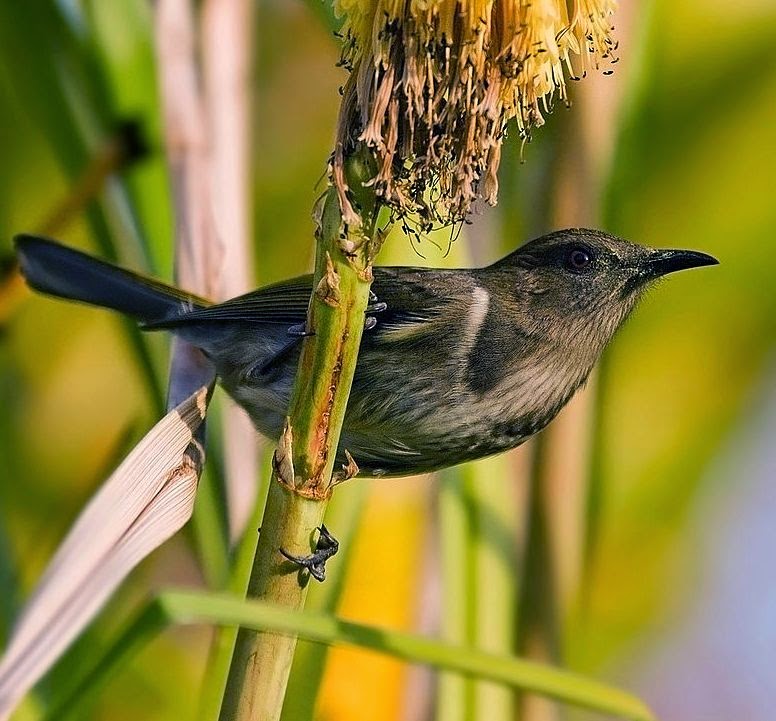 |
| Photo by J.J. Harrison (Wikipedia) |
Common name:
crescent honeyeater (en); melífago-d’asa-dourada (pt); méliphage à croissants (fr); mielero alifuego (es); goldflügel-honigfresser (de)
Taxonomy:
Order Passeriformes
Family Meliphagidae
Range:
This species is found in endemic to south-eastern Australia, being found from north-eastern New South Wales to south-eastern South Australia, and in Tasmania and islands in the Bass Strait.
Size:
These birds are 14-17 cm long and have a wingspan of 16-23 cm. They weigh 12-23 g.
Habitat:
The crescent honeyeater is mostly found in tall, Eucalyptus-dominated sclerophyll forests, also using dry scrublands, plantations and urban areas.
Diet:
They feed on nectar, fruit and insects, as well as manna, honeydew and lerp.
Breeding:
Crescent honeyeaters can breed all year round and form long-term pair bonds. They nest in loose colonies, each female building a deep cup made of of cobweb, bark, grass, twigs, roots and other plant materials, and lined with grass, down, moss and fur. It is placed in the centre of a scrub, often near water. there she lays 2-3 pale pink eggs with lavender and chestnut splotches, which she incubates alone for 13 days. The chicks are raised by both parents and fledge 13 days after hatching, but only become fully independent about 2 weeks later.
Conservation:
IUCN status – LC (Least Concern)
This species has a large breeding range and is described as common. The population is suspected to be stable in the absence of evidence for any declines or substantial threats.







